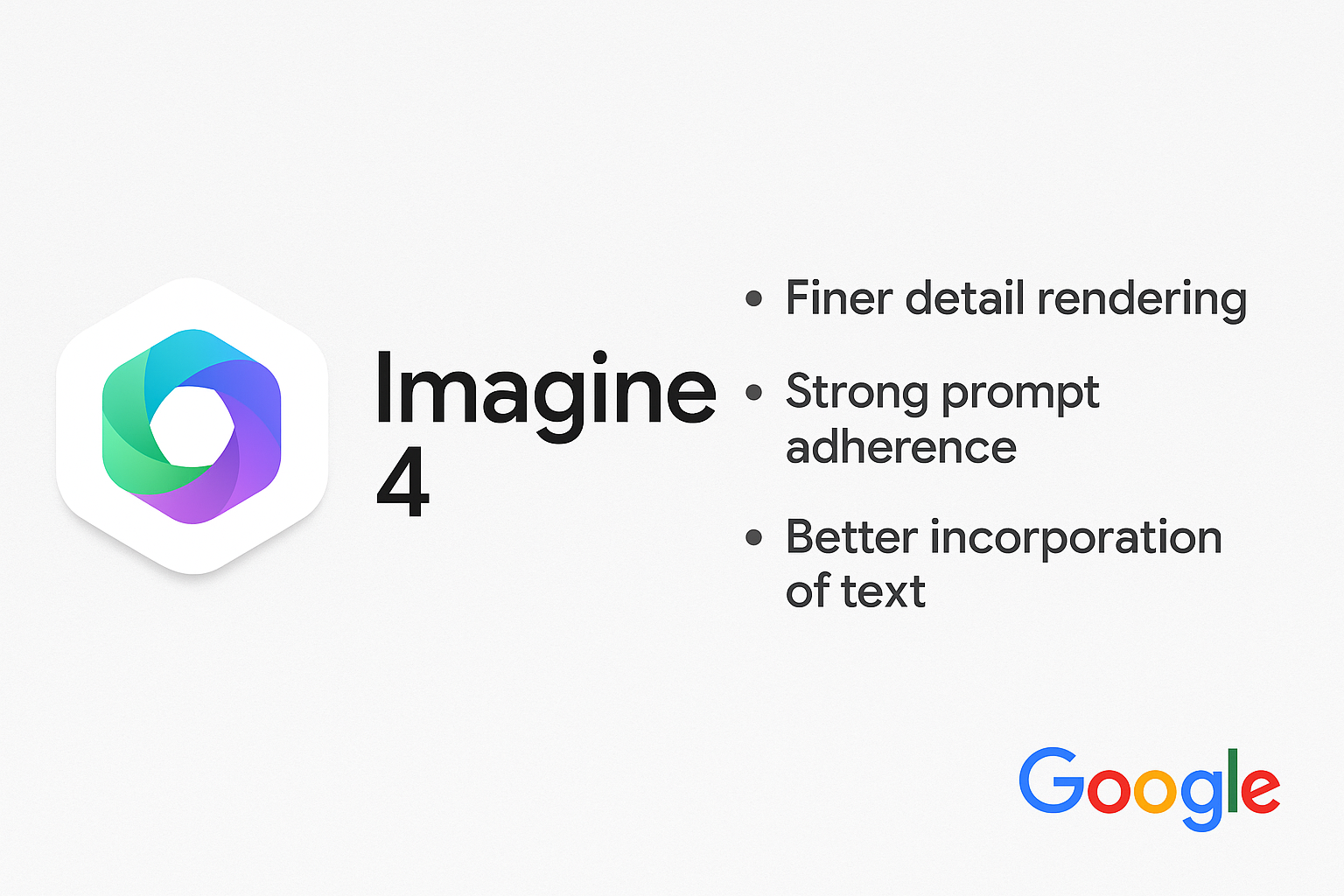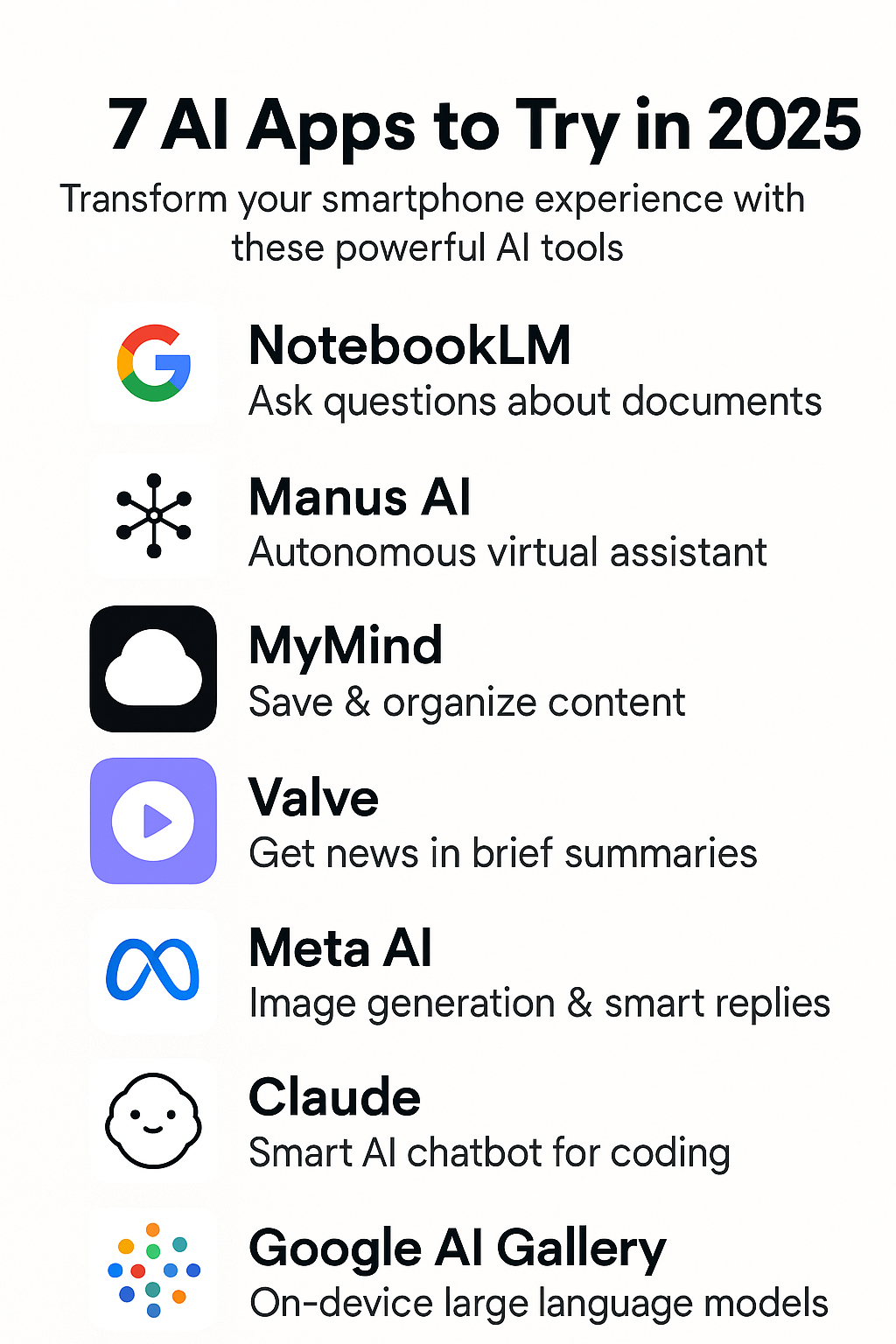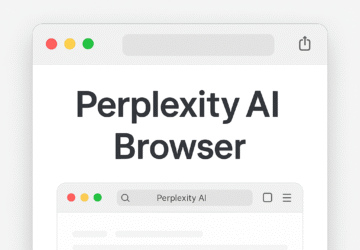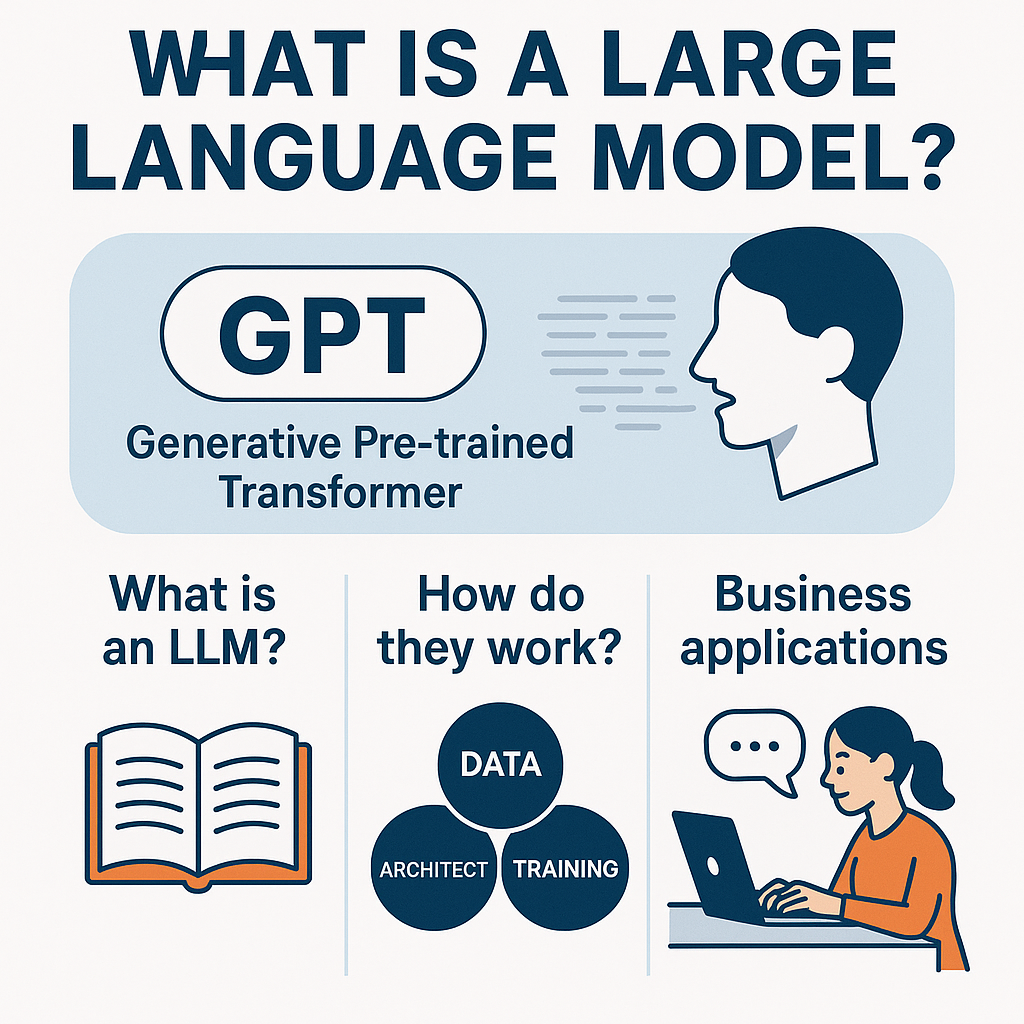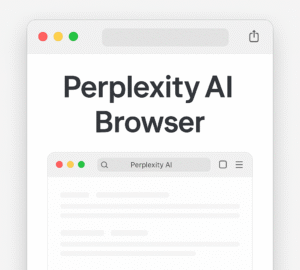Large Language Models (LLMs) like GPT (Generative Pre-trained Transformer) are transforming industries—from customer support to content creation and software development. In this article, we’ll break down what LLMs are, how they work, and what real-world business applications they enable.
📘 What Is a Large Language Model (LLM)?
A Large Language Model is a type of foundation model trained on massive datasets of text—books, articles, conversations, and even code. These models are called “large” because they contain billions of parameters and are trained on terabytes or even petabytes of data.
💡 Example: GPT-3 has 175 billion parameters and was trained on over 45 TB of text data.
LLMs like GPT fall under the broader category of foundation models—which are AI models trained on general-purpose data that can later be fine-tuned for specific tasks. While foundation models can process images, audio, or text, LLMs are specialized in text-based outputs.
🧠 How Do LLMs Work?
You can understand LLMs through three core components:
1. Data
LLMs are trained on vast corpora of publicly available text:
- Books
- Websites
- Conversations
- Code repositories
Even a 1 GB text file can hold ~178 million words. A petabyte holds 1 million times that—an unfathomable amount of language data.
2. Architecture
The backbone of most LLMs (including GPT) is the transformer neural network. This architecture is designed to understand the context of every word in a sentence by evaluating its relationship to every other word.
This contextual awareness allows the model to:
- Predict what comes next in a sentence
- Generate coherent paragraphs
- Translate languages
- Write code and more
3. Training Process
Training involves teaching the model to predict the next word in a sentence. For example:
- Input: “The sky is…”
- The model might initially predict: “The sky is bug”
- After many iterations, it learns to predict: “The sky is blue”
Over time, the model fine-tunes billions of internal parameters to minimize prediction errors. Once pre-trained, the model can be fine-tuned on smaller, specialized datasets to improve performance for specific tasks (e.g., legal advice, medical summaries, or coding help).
💼 Business Applications of LLMs
LLMs aren’t just academic experiments—they’re powering real tools and solving real business challenges. Here are some of the most impactful use cases:
1. 🧑💻 Customer Service
LLMs can power AI chatbots that handle:
- Common support queries
- FAQ resolution
- Order tracking
- Refund processing
This reduces customer wait time and frees up human agents for more complex issues.
2. ✍️ Content Creation
LLMs can generate:
- Blog posts
- Email campaigns
- Product descriptions
- Social media captions
- YouTube scripts
This makes them invaluable for marketing teams and small businesses trying to scale their content production without large staff.
3. 💻 Software Development
Tools like GitHub Copilot use LLMs to:
- Auto-complete code
- Suggest functions
- Review pull requests
- Identify bugs
LLMs accelerate development time and reduce cognitive load on engineers.
4. 📊 Data Analysis & Summarization
LLMs can:
- Summarize long documents
- Generate meeting notes
- Analyze customer feedback
- Extract insights from CRM or ticket logs
5. 🧑🏫 Education & Training
LLMs assist with:
- Personalized learning
- Grading support
- Generating quizzes
- Language translation
🚀 The Future of LLMs
We’re just scratching the surface. As LLMs get faster, cheaper, and more accurate, new applications will emerge across:
- Healthcare
- Legal tech
- E-commerce
- Real-time translation
- Digital assistants
The key lies in fine-tuning and domain adaptation, which allows general models to become industry-specific experts.
📌 Final Thoughts
Large Language Models are not just hype—they are foundational AI technologies transforming how we work, communicate, and innovate. Whether you’re a business leader, developer, or content creator, understanding LLMs today puts you at the forefront of tomorrow’s AI revolution.
If you’re new to AI or exploring how to use LLMs in your business, start small—experiment with chatbot builders, content generators, or coding assistants—and scale as you go.
